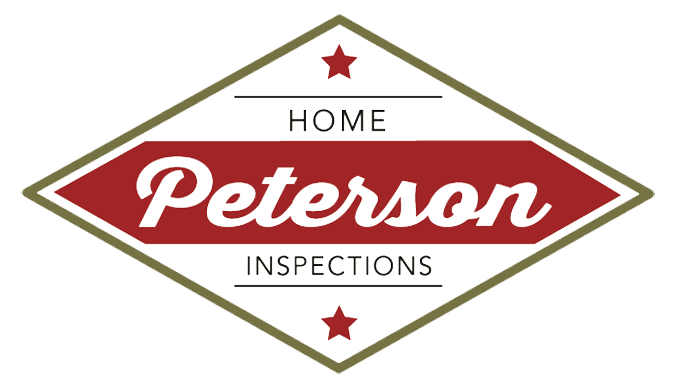Blog

Why a Home Inspection is Essential Before Buying or Selling Whether you’re buying your dream home, selling your property, or maintaining your investment, a professional home inspection is a crucial step that provides peace of mind and protects your financial interests. At Peterson Home Inspections, we offer thorough, unbiased inspections that help you understand the true condition of your home and avoid costly surprises. Top Benefits of a Home Inspection 1. Uncover Hidden Issues Before Buying A home inspection reveals defects or safety hazards that might not be visible during a simple walkthrough. From structural damage and roofing problems to electrical and plumbing concerns, an inspection gives you a clear picture of the property’s condition so you can make informed decisions. 2. Negotiate Better Purchase Terms With a detailed inspection report, buyers can negotiate repairs, request credits, or adjust the purchase price based on the home's actual condition—saving potentially thousands of dollars on costly repairs after closing. 3. Avoid Unexpected Repair Costs Identifying problems early means you can plan for repairs or avoid buying a home with serious issues. This proactive approach helps protect your investment and avoid surprises after move-in. 4. Peace of Mind for Sellers Sellers who get a pre-listing inspection can address issues beforehand, increase buyer confidence, and speed up the selling process by presenting a transparent, trustworthy report. 5. Safety First Home inspections uncover potential safety hazards such as faulty wiring, mold, radon, or carbon monoxide risks. Protecting your family and future occupants is a top priority. 6. Maintenance Planning Even if you’re not buying or selling, routine home inspections help identify maintenance needs before they become expensive repairs. This prolongs the life of your home’s systems and keeps everything running smoothly. 7. Better Insurance Approval Some insurance companies require a home inspection to approve coverage or set rates. A clean inspection report can help you qualify for better policies and premiums. What Does a Home Inspection Include? A professional inspection from Peterson Home Inspections covers every major system and component of the home, including: Structural components (foundation, framing, walls) Roofing and gutters HVAC systems (heating, ventilation, and air conditioning) Electrical systems (wiring, outlets, panels) Plumbing (pipes, fixtures, water heaters) Interior features (doors, windows, floors) Insulation and ventilation Appliances and safety devices Why Choose Peterson Home Inspections? Licensed and insured inspectors with years of experience Advanced tools including thermal imaging and moisture meters Detailed digital reports delivered quickly Clear explanations and expert advice you can trust Serving the Davenport, Moline, and Quad Cities area Schedule Your Home Inspection Today Don’t leave your home investment to chance. Whether you’re buying, selling, or maintaining a property, a professional home inspection from Peterson Home Inspections will give you confidence and clarity. Contact us today to schedule your home inspection and protect your future!

Radon, a colorless and odorless radioactive gas, is a naturally occurring element that can seep into homes through the ground. It's a serious health concern, as prolonged exposure to elevated levels of radon can increase the risk of lung cancer. Since radon is invisible and odorless, the only way to know if your home is affected is through radon testing. In this blog, we'll delve into the importance of radon testing services, how they work, why you should consider them, and the steps involved in the process. Why Test for Radon? Radon is a naturally occurring gas that forms when uranium in the soil and rocks breaks down. It can easily enter homes through cracks in the foundation, gaps in walls, and other openings. Once inside, radon can accumulate to dangerous levels, potentially leading to serious health risks, especially when exposed over an extended period. Radon is the second leading cause of lung cancer after smoking, and it's responsible for thousands of lung cancer deaths every year. The Importance of Radon Testing Services Testing for radon is a crucial step in ensuring the safety of your home and the health of your family. Here's why radon testing services are so important: Early Detection: Radon is invisible and odorless, making it impossible to detect without proper testing. Regular radon testing helps you identify if your home has elevated levels of radon. Health Protection: Prolonged exposure to high levels of radon can lead to lung cancer. Testing allows you to take necessary actions to reduce radon levels and minimize health risks. Peace of Mind: Knowing that your home is radon-free provides peace of mind for you and your loved ones. It's a proactive step toward ensuring a safe living environment. Property Value: If you're buying or selling a home, radon testing can affect property values. A home with a low radon level is more attractive to potential buyers. How Radon Testing Works Radon testing involves measuring the levels of radon gas in the air of your home. There are two main types of radon testing methods: Short-Term Testing: Short-term tests are usually conducted over a period of 2 to 7 days. These tests provide a snapshot of radon levels in your home during a specific timeframe. They are convenient and can provide initial indications of potential radon issues. Long-Term Testing: Long-term tests run for more than 90 days and provide a more comprehensive assessment of radon levels. They account for variations due to factors like weather and seasonal changes, offering a more accurate representation of the average radon concentration. Professional Radon Testing Services While DIY radon testing kits are available, professional radon testing services offer several advantages: Accuracy: Certified professionals use calibrated equipment that ensures accurate and reliable results. Knowledge and Expertise: Professionals understand how radon enters homes, where it's likely to accumulate, and how to interpret test results. Comprehensive Analysis: Professionals can provide detailed analysis of test results, including recommendations for mitigation if radon levels are high. Peace of Mind: Using a professional service eliminates any concerns about incorrect testing procedures or misinterpretation of results. The Radon Testing Process Professional radon testing services typically follow these steps: Consultation: The process starts with a consultation, during which the testing company gathers information about your home, its size, construction, and any known factors that might affect radon levels. Testing Plan: Based on the consultation, the testing company creates a customized testing plan. They determine the appropriate locations for placing testing devices. Device Placement: The testing devices are placed in the designated locations, typically in the lowest livable area of your home. The devices run for the specified testing period. Data Collection: After the testing period, the devices are collected, and the data is analyzed to determine the average radon concentration in your home. Results and Recommendations: The testing company provides you with the test results and any recommendations for mitigation, if necessary. Taking Action Based on Results If the radon test results indicate elevated levels of radon in your home, it's important to take action. Radon mitigation involves using specialized techniques to reduce radon concentrations to safe levels. Mitigation methods can include installing radon mitigation systems, sealing cracks in foundations, improving ventilation, and more. In Conclusion Radon testing is a critical step in safeguarding your home and the health of your loved ones. By measuring radon levels in your home, you can take proactive measures to mitigate potential health risks associated with prolonged exposure to elevated radon concentrations. Professional radon testing services offer accurate results, expert analysis, and peace of mind, ensuring that you're well-informed and equipped to make the best decisions for your home's safety. Don't leave your health to chance – consider radon testing as an essential component of your home maintenance and safety strategy.
